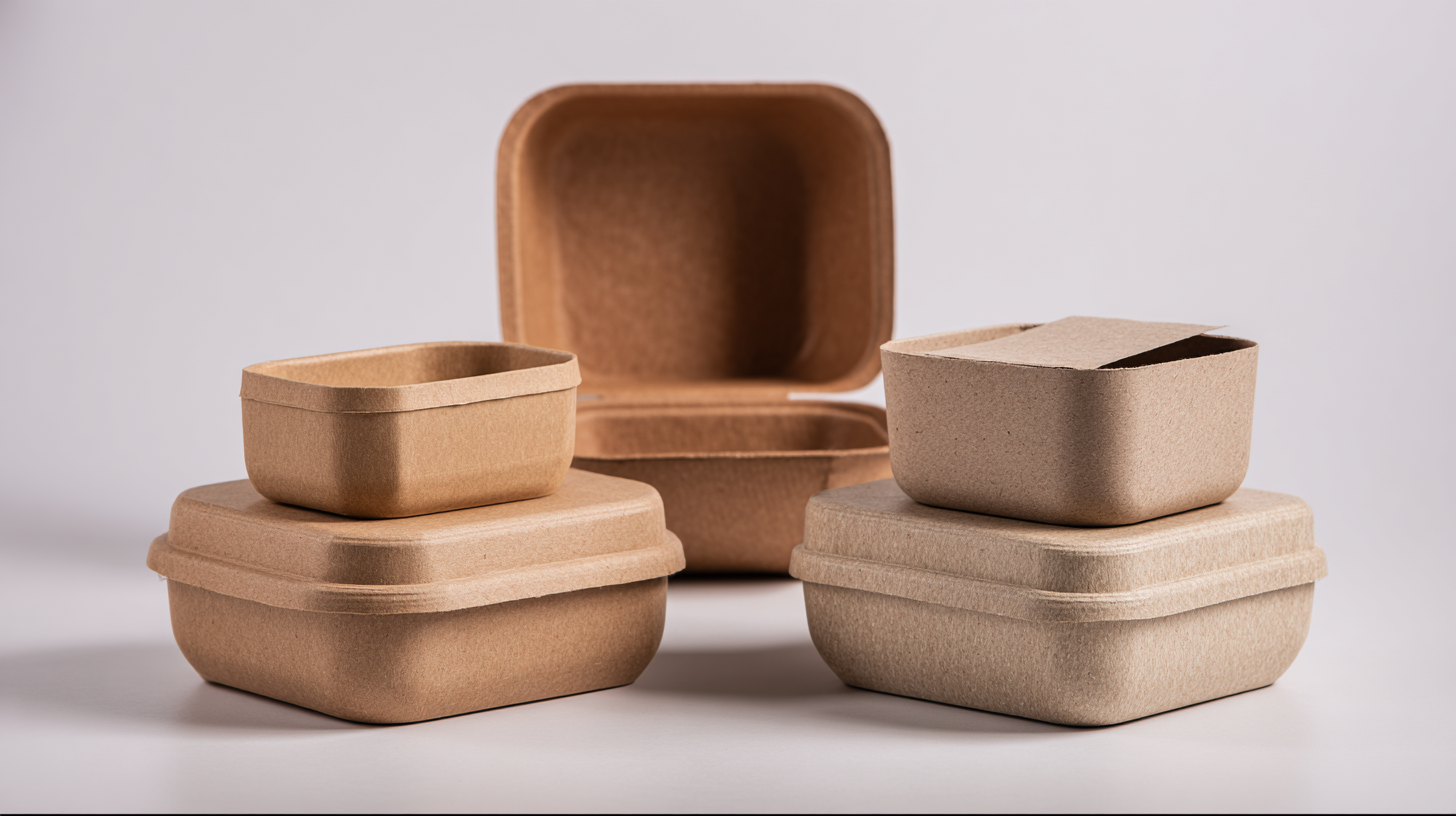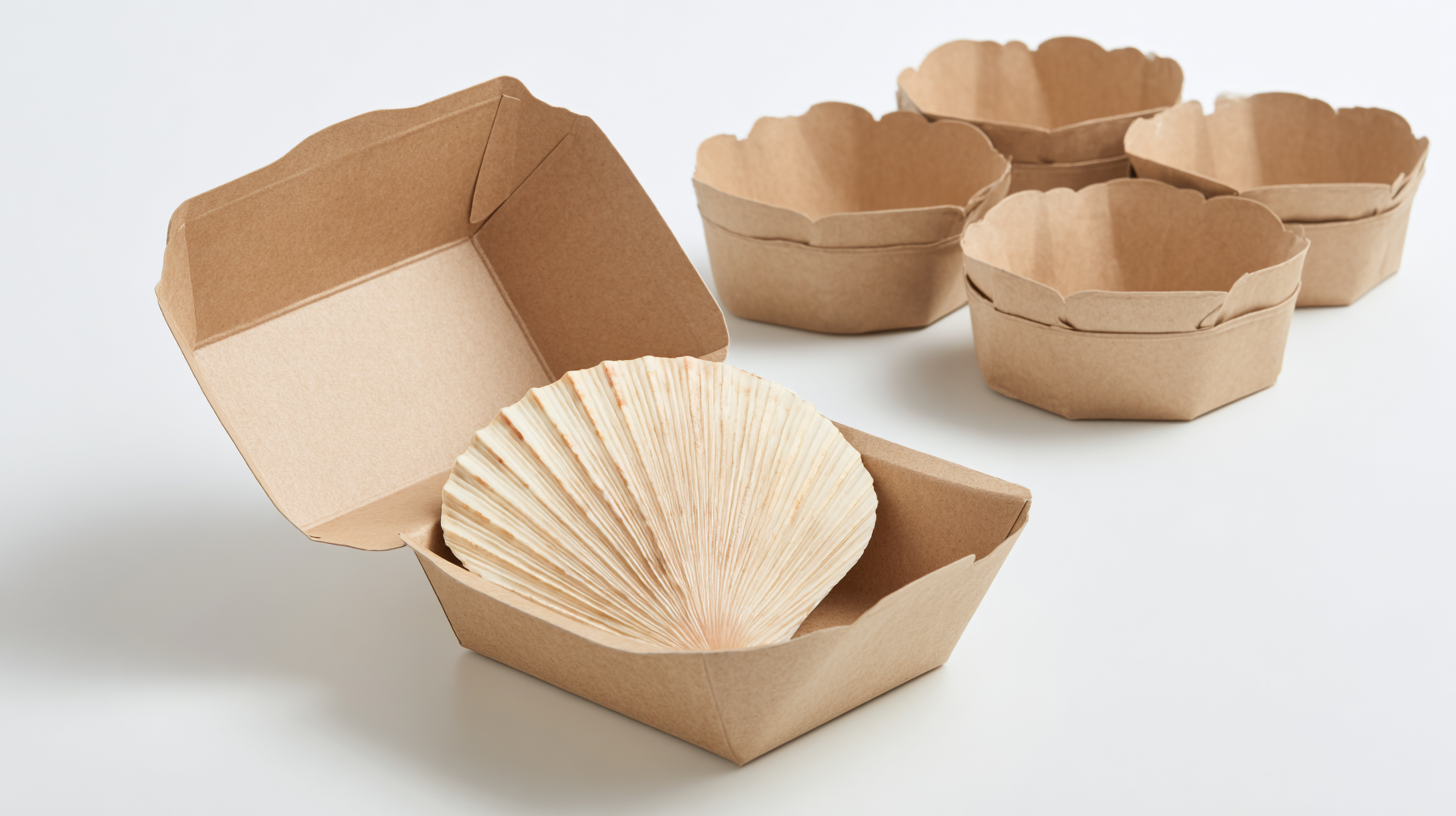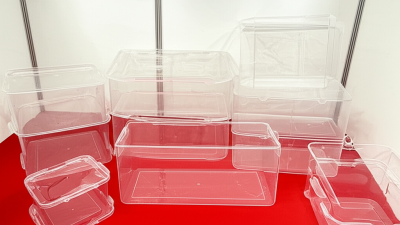As consumer awareness of environmental issues continues to rise, sustainable clamshell packaging is emerging as a preferred choice among eco-conscious brands and customers alike. According to a report by Smithers Pira, the global market for sustainable packaging is projected to reach $500 billion by 2028, with a significant shift towards materials and designs that minimize environmental impact. Clamshell packaging, known for its versatility and protective qualities, has increasingly adopted eco-friendly materials that align with these consumer trends. A study by the Global Data found that 52% of consumers are willing to pay more for products that come in sustainable packaging. This trend not only reflects a growing demand for environmentally responsible solutions but also highlights the clamshell packaging's potential to drive innovation and sustainability within the industry. As brands pivot towards eco-friendly practices, clamshell packaging stands at the forefront, positioning itself as a key player in the movement towards a greener future.

The increasing awareness of environmental issues has significantly driven the demand for eco-friendly packaging solutions. As consumers become more conscious of their purchasing decisions, they are actively seeking products that are sustainably packaged. This shift reflects a growing appreciation for brands that prioritize environmental responsibility, pushing companies to innovate and adopt materials with lower ecological footprints.

Among these sustainable options, clamshell packaging is gaining popularity due to its versatility and recyclability. Made from materials such as biodegradable plastics or recycled paper, clamshells not only provide protection for the products but also minimize waste. Brands are now embracing this packaging style, understanding that it resonates with the values of eco-conscious consumers. As a result, the market for sustainable clamshell packaging is on the rise, demonstrating a clear trend towards greener consumer practices.
The growing emphasis on sustainability in consumer habits has led to the rise of clamshell packaging as a conscientious choice for brands and shoppers alike. Notably, reports indicate that the global sustainable packaging market is projected to reach $440 billion by 2027, highlighting a shift in consumer preference toward eco-friendly solutions. Clamshell packaging, typically made from recyclable materials, not only reduces waste but also helps maintain product freshness and visibility, which is essential for attracting environmentally conscious consumers.
Choosing clamshell packaging can greatly enhance a brand's image. A survey by Nielsen revealed that 66% of consumers are willing to pay more for sustainable brands. Clamshells’ ability to showcase products effectively while still being environmentally responsible makes them an attractive option for retailers. Moreover, they provide practical benefits such as stackability and ease of transport, potentially reducing costs in logistics.
**Tips for Implementation:**
- When sourcing clamshell packaging, look for materials that are 100% recyclable to maximize sustainability.
- Consider using biodegradable inks for branding and labeling, which complements the eco-friendly design.
- Encourage your customers to recycle by providing information on proper disposal methods right on your packaging.
| Dimension | Value |
|---|---|
| Overall Market Growth (2022-2027) | 15% CAGR |
| Percentage of Consumers Preferring Eco-Friendly Packaging | 70% |
| Reduction in Carbon Footprint Compared to Traditional Packaging | 30% |
| Percentage of Recyclable Clamshell Packaging | 80% |
| Consumer Willingness to Pay More for Sustainable Options | 60% |
| Projected Increase in Organic Product Sales (Next 5 Years) | 25% |
| Growth of E-commerce Sales in Eco-Friendly Products | 40% |
The demand for sustainable packaging solutions has intensified as consumers become more environmentally conscious. One of the most notable innovations in this sector is the development of sustainable clamshell packaging. This packaging option, typically used for food and other consumer products, leverages innovative materials and cutting-edge technologies to reduce its ecological footprint. Biodegradable plastics and compostable materials are among the leading alternatives, providing a functional yet environmentally friendly option for brands seeking to appeal to eco-conscious customers.
Advancements in design technologies, such as 3D printing and automated manufacturing processes, further enhance the capabilities of sustainable clamshell packaging. These innovations allow for precise customization, reducing material waste and optimizing production efficiency. Additionally, enhanced barrier properties in new materials help preserve product freshness while minimizing the need for excessive plastic usage.
As consumers increasingly favor products with minimal environmental impact, the rise of sustainable clamshell packaging exemplifies the larger trend toward eco-friendly solutions in the marketplace.
The transition to eco-friendly packaging alternatives presents numerous challenges, particularly in the widely used clamshell design. As industries recognize the need for sustainable practices, the shift from traditional plastic to fiber-based products has been met with regulatory scrutiny, necessitating compliance with health and safety standards. The complexities of material selection can hinder companies aiming to implement biodegradable solutions that do not compromise on performance or consumer appeal.

Furthermore, the production of sustainable clamshells demands innovation in processing and manufacturing technologies. Companies must adapt to new materials that are not only recyclable and biodegradable but also maintain the structural integrity required for protective packaging. The industry is grappling with the balance of cost-effectiveness while ensuring that eco-friendly options can compete with established plastic solutions. This multifaceted challenge requires collaboration across the supply chain, from material producers to retailers, to develop universally accepted standards that streamline the transition towards a greener packaging landscape.
Consumer awareness plays a pivotal role in shaping sustainable packaging trends, particularly in the realm of clamshell packaging. As consumers become increasingly eco-conscious, they seek packaging solutions that reflect their values. This shift in mindset has led to a growing demand for environmentally friendly materials, prompting businesses to explore innovative alternatives to traditional plastic clamshells. The rise in consumer advocacy for sustainable practices is influencing brands to adopt recyclable and biodegradable options, catering to an audience that prioritizes sustainability in their purchasing decisions.
Moreover, educational initiatives and transparency about the environmental impact of packaging materials are vital in enhancing consumer understanding. Brands that effectively communicate their sustainability efforts not only attract environmentally aware customers but also build strong loyalty. This proactive approach turns consumers into advocates for brands, encouraging further innovation in packaging design and materials. As consumers recognize their purchasing power, they play an essential role in pushing the market toward more sustainable practices, and the trend of sustainable clamshell packaging exemplifies this growing movement in consumer behavior.
This chart illustrates the increase in consumer awareness regarding sustainable clamshell packaging from 2019 to 2023. The data highlights a growing trend towards eco-friendly practices among consumers, indicating a significant shift in preferences towards sustainable packaging solutions.



